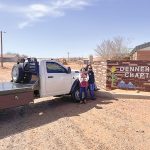
Council committee pushing for accountability of ARPA funds

Navajo Times | Krista Allen A woman fans out $2,000 after cashing her ARPA Hardship Assistance check at Wells Fargo in Tuba City on Thursday, March 3. The bank asked the Navajo Times to safeguard customer identity unless the customer was OK with being photographed.
By Marley Shebala
Special to the Times
WINDOW ROCK – The deadline for the Navajo Nation to have its $2.1 billion in U.S. American Rescue Plan Act funds spent or obligated, is Dec. 31, 2024. That means the tribal government has about 12 months to determine how the ARPA funds will be used.
Navajo Nation Fiscal Recovery Fund Office Director Tom Platero recently informed the Navajo Nation Council’s Naabik’íyáti Committee that any unobligated or unspent ARPA funds that exists by the Dec. 31, 2024, deadline would revert to the U.S. Treasury.
According to most of the Naabik’íyáti Committee members, after listening to reports from Navajo tribal offices, divisions, and agency directors about the multitude of roadblocks stopping or slowing down the spending of ARPA funds for chapter projects, they believe that the administration of Navajo Nation President Buu Nygren and Vice President Richelle Montoya will not have the $2.1 billion ARPA funds obligated by Dec. 31, 2024.
The Naabik’íyáti Committee has been meeting since Monday with most of the Nygren-Montoya administration, including the Navajo Nation Office of the Controller, Office of Management and Budgets, and the Contracts and Grants department regarding how much of the $2.1 billion has been spent and/or obligated.
The committee also asked for the number of Navajo Nation Sihasin funded capital improvement projects that are eligible for reimbursement with the remaining balance of the Navajo Nation ARPA funds.
The Naabik’íyáti Committee scheduled a four-day work session on the ARPA and Sihasin Funds from Monday to Thursday that begins at 9 a.m. daily. The ARPA and Sihasin Funds work sessions were moved on Tuesday from the Navajo Council Chamber to a larger conference room in the Navajo Department of Transportation building located just west of Tsé Bonito, New Mexico.
According to a Sept. 21, 2023, Navajo Nation Council press release, the Nation has expended over 50-percent of its ARPA funds. Previously, the Navajo Nation Council stated in a July 2022 press release that they had appropriated about $1.1 billion in ARPA funding to construct new water and electric lines and broadband internet connections, mitigate COVID-19, support E911/public safety, and for housing infrastructure projects for the Navajo people.
Speaker Crystalyne Curley, noted to the Naabik’íyáti Committee on Monday that the work session was the “perfect” opportunity to develop legislation with proposed amendments to the current Navajo Nation Council resolutions that appropriated about $1.1 billion ARPA funds.
“Ask any questions,” Curley urged the Naabik’íyáti members.
Budget and Finance Committee member Amber Kanazbah Crotty asked Curley if there are any proposed amendments to Navajo Nation Council ARPA resolutions to loosen the ARPA spending guidelines and policies that are considered “too restrictive,” which she said slowed down urgently needed local government ARPA projects.
“There are more than 110 chapters, and each chapter was impacted by Covid,” Crotty said. “The seven chapters I represent have received different levels of assistance and services from the Navajo Nation Division of Community Development and that’s based on each chapter’s capacity to move their ARPA projects forward to completion.”
Crotty added that some chapters are in a stronger position to assist other chapters with administrative issues, which results in their chapter ARPA projects not moving forward through the ARPA project eligibility process, or they are just getting into the process.
Crotty emphasized that some chapters also face management issues with their chapter manager or chapter coordinator not working on chapter ARPA projects. She suggested that the Navajo Division of Community Development, which has supervisory authority over chapter managers and chapter coordinators, help those chapters get their ARPA projects completed by directly supervising the chapter managers and chapter coordinators.
According to Crotty, the Navajo Nation Department of Justice reported to the Naabik’íyáti Committee that they are unable to determine if a chapter ARPA project is ARPA eligible because some chapters are not responding to their requests for additional information, in their efforts to stamp their ARPA project as eligible.
Some chapters urgently need help with ARPA housing renovations and housing repair projects, Crotty noted. The Navajo Housing Authority reported 10 years ago that Navajo families need 35,000 homes.
“Community assessments are needed regarding the state of homes on the Navajo Nation and chapters were asked to submit community assessments, under the federal CARES funds, which I hoped would help to filter down CARES funds to chapters because during Covid, families were given tents for their loved ones, who became sick from Covid, to be isolated in,” Crotty said.
Crotty added that those homes also needed new windows, doors, a new roof, and replacement of floors that were deteriorating. There is a “critical need” for housing assistance, she emphasized.
“Our government cannot continue to issue tents to our families,” Crotty said. “We need to push all these ARPA projects. So, who is on the Navajo Nation executive side that will help chapters push these projects.”
Crotty said she is helping a family of 12 people, who are living in one home and who have submitted affidavits about their children sleeping on the floor.
“Covid took many of our Navajo matriarchs, which resulted in families struggling to keep their home and family together,” Crotty said.
Crotty reminded Platero that the Navajo Nation Council provided a huge chunk of the Navajo Nation’s $2.1 billion ARPA funds to his office to process the Navajo Nation’s ARPA projects.
According to an Oct. 4, 2021, press release from then President Jonathan Nez and then Vice President Myron Lizer, Navajo Council Resolution CJY-41-21 allocated 10% of the $2.1 billion ARPA funds for central support service and regulatory costs and Nez and Lizer are responsible for distributing $36 million, annually over five years, to executive branch programs and offices to implement the ARPA funds.
The annual five-year allocation covers administrative and support costs at a rate much lower than the standard 17% Indirect Cost that is provided for federal funds for tribes, Nez stated. The Office of the Speaker was also allocated $20 million for the same purpose.
Crotty also requested a wholistic view of the type of support available or needed in the Navajo Nation’s 24 regions or five agencies from Navajo Tribal Utility Authority and Navajo Engineering and Construction Authority, which are both Navajo government enterprises.
“We are still riding these Covid waves,” Crotty added. But she said Nygren and Montoya lifted the Covid Executive Order and so now Navajo government employees are forced to use their own sick leave and annual leave when they become sick with Covid.
Crotty recalled Nez and Lizer asking council delegates to have one of their chapters act as a Navajo Nation Regional Distribution Center for Covid aid, which would allow for Nez and Lizer to financially reimburse chapters for being distribution centers. She asked what the status of those reimbursements is.

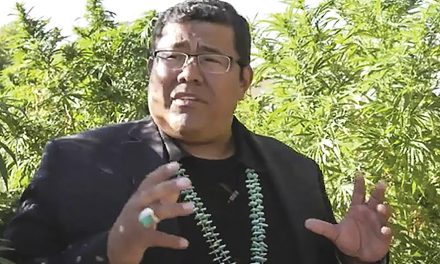
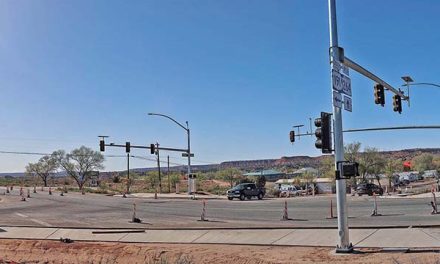
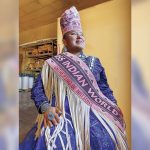
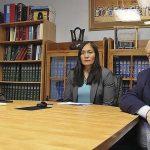


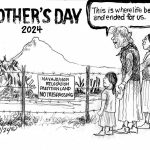


 Highway 264,
Highway 264, I-40, WB @ Winslow
I-40, WB @ Winslow